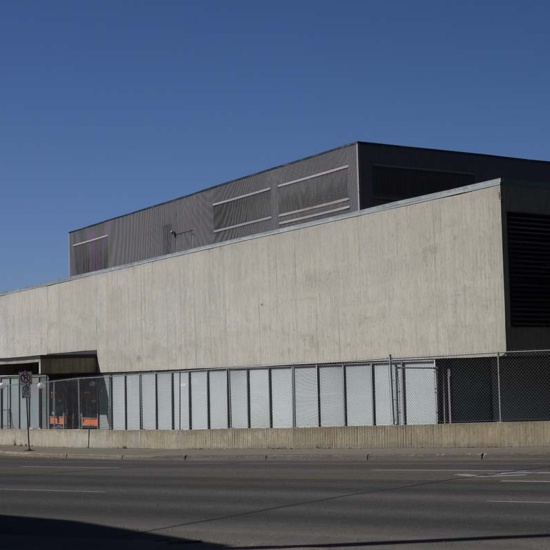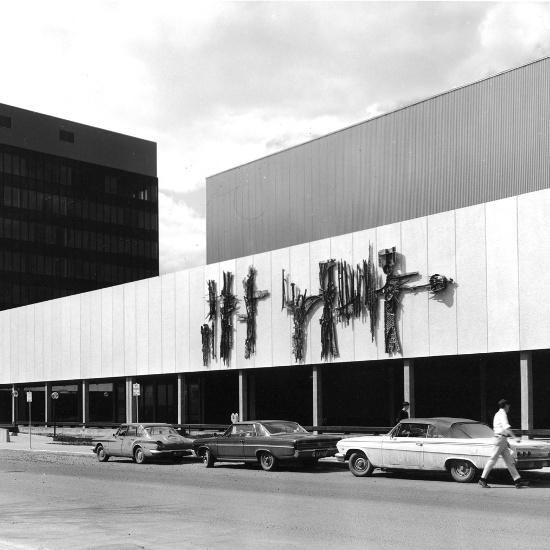Richards Berretti and Jellinek Architects
Richards, Berretti, & Jellinek brought dramatic representations of the Brutalist style of architecture to Edmonton.
Richards, Berretti, & Jellinek brought dramatic representations of the Brutalist style of architecture to Edmonton.
Richards, Berretti, & Jellinek (c. 1950-1960)
Born in Italy in 1927, Massimiliano (Max) Berretti came to Edmonton to work as a City engineer. George Jellinek was working for the Alberta Department of Public Works at about the same time. Jellinek had been lead architect with the department in the design of the Northern Alberta Institute of Technology (NAIT) in 1962, and designed Annunciation Catholic Church as well. The two teamed up with Herbert (Bertie) J. Richards and created the architectural firm Richards, Berretti, & Jellinek.
The partners concurrently created two of Edmonton’s most iconic representations of Brutalist architecture: the Student’s Union Building (SUB) on the campus of the University of Alberta and the Edmonton Public School Board (EPSB) Building on 107 Avenue and 101 Street. These large, linear structures are comprised of poured concrete and have the characteristic hard right angles and box-like form that typify this style. Both are spacious, functional, and simply unadorned, emphasizing the modernist principle that “form forever follows function”.
SUB was the largest building of its kind at the time, designed to serve the recreational and cultural needs of university students. According to David Murray and Marianne Fedori, “the interior detailing of modernist stairs, finishes, and light fixtures was remarkable in its time.” The EPSB Building was similar in composition to the two lower floors of SUB, with the open main floor supporting a second floor concrete box. The major difference between the two is the quality of concrete cladding: the EPSB building is a softer, more textured board-formed concrete, whereas SUB features smooth pre-cast concrete panels.
Richards, Berretti, & Jellinek also designed St. Timothy’s Anglican Church. With a bold asymmetrical layout and an impressive stained glass window bordering the altar, the church is an exemplary modern building situated between residential bungalows and the community playgrounds, embodying the modernist neighbourhood that has clear-cut divisions for working, leisure, and circulation.
Berretti was involved in many other unique projects: he pioneered construction techniques for work in the north on permafrost, won an award for excellence in the use of steel in his design for Edmonton’s Citadel Theatre, and was involved in designing and building the Confederation Bridge between Prince Edward Island and New Brunswick. An avid hunter and fisherman, Berretti also sat on the board of Governors for the University of Alberta in the 1980s. He died in 2016.
No other information is available at this time on Bertie Richards or George Jellinek.
Details
Type
TBA
Founded
TBA
Architects
Time Periods
Neighbourhoods
Architectural Styles
Character Defining Elements
Cantilever projections, Columns, Curtain wall, Flat roof, Irregular footprint, Metal structure, Mural, Portico, Poured concrete structure, Rectangular footprint, Sun screens, Textured concrete, Three storeys or more, Two storeys

